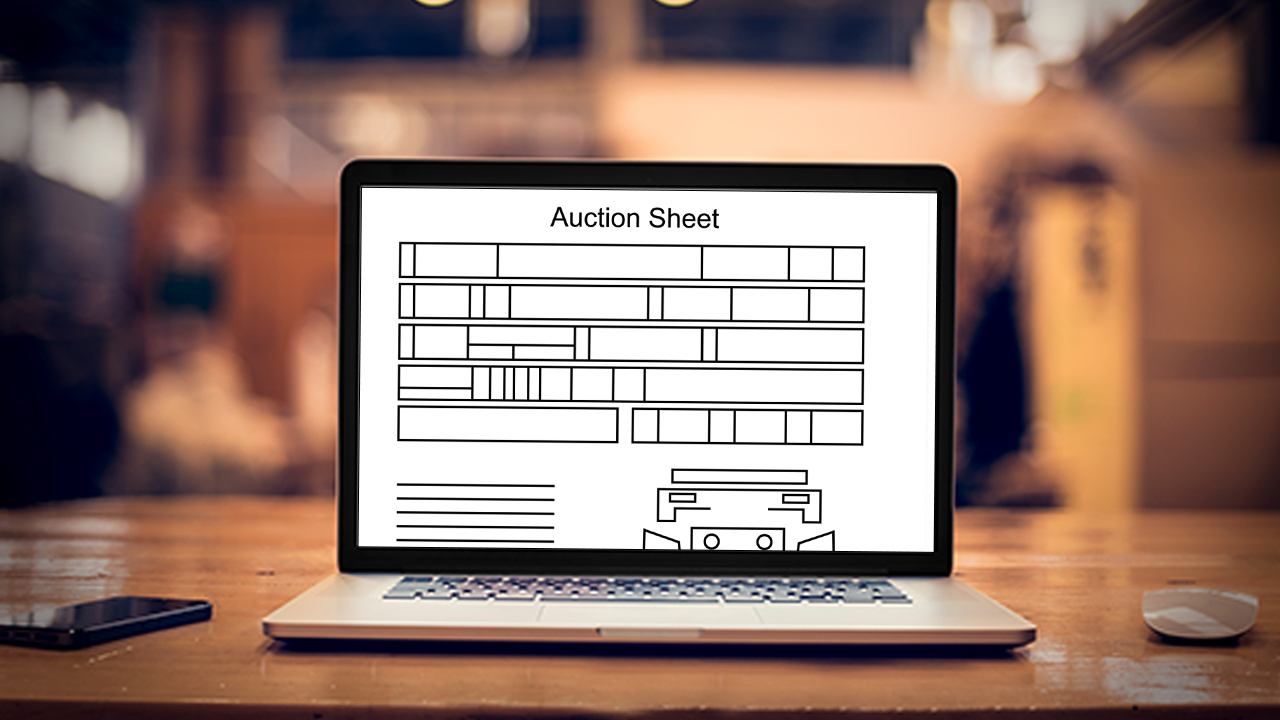
Pakistan auto industry is unlikely any. Saturated with over-priced, sub-standard, low fuel economy cars, it defies logic. Lack of features, uncertain prices and poor build quality establish grounds for the general public to explore better options. That explains why Pakistan is one of the biggest importers of JDM cars. These second-hand driven cars still outmatch brand new locally manufactured cars.
The buying process of the two are entirely different. If you are one of those who are interested in buying a JDM from a local showroom or importing one yourself, you need to be able to read its auction sheet. However, it’s easier said than done.
Read: How to import a car from Japan in 2022?
Japanese cars have a piece of paper called an auction sheet explaining everything about the car’s physical condition. Only if you know how to read an auction sheet, can you benefit a lot from it. There are many particulars other than the grade of the car, which are equally important. Let’s find out what the auction sheet is and how you can read it?
What is an Auction Sheet?
The auction sheet is a complete and detailed report on the car’s physical condition. It’s issued at the auction house at the time of bidding, reflecting the car’s then condition. Once the car leaves the Japanese auction house and reaches Pakistan, any damage incurred during the voyage isn’t mentioned in the auction sheet. That is why some complain that their car has a scratch mark on it or a dent which isn’t mentioned in the auction sheet.
The damage to the body is most likely due to mishandling at the local ports where it has to wait for weeks to get cleared by customs officials. OLX offers a car inspection service, so you know the car’s actual condition once it arrives in Pakistan.
How to verify the Auction Sheet?
In addition to deciphering an auction sheet, there is the challenge of knowing a genuine auction sheet from a fake or punched auction sheet. Don’t get scammed, know what you pay for by verifying the auction sheet through OLX auction sheet verification. Our auction sheet verification service lets you know the car’s original condition so you can be at peace and make an informed decision.
How to read an Auction Sheet?
Once you have verified the auction sheet as authentic, the next step is to read it. You might have seen the alphabets with numericals listed on the car’s frame in the auction sheet. Know what that means? Let us explain it to you.
Auction list explanation
Scratches
- A1 Small Scratch
- A2 Scratch
- A3 Big Scratch
- A4 Deep Scratch
Dimples
- E1 Few Dimples
- E2 Several Dimples
- E3 Many Dimples
Dents
- U1 Small Dent
- U2 Dent
- U3 Big Dent
Repair Marks
- W1 Repair Mark/Wave (hardly detectable)
- W2 Repair Mark/Wave
- W3 Obvious Repair Mark/Wave (needs to be repainted)
Rust and Corrosion
- S1 Rust
- S2 Heavy Rust
- C1 Corrosion
- C2 Heavy Corrosion
Paint Job
- P Paint marked
- H Paint faded
Replaced or needs replacement
- XX Replaced
- X Needs to be replaced
Scratch
- B1 Small dent with scratch (size like a thumb)
- B2 Dent with scratch (size like flat of the hand)
- B3 Big Dent with scratch (size like elbow)
Cracks
- Y1 Small Hole or Crack
- Y2 Hole or Crack
- Y3 Big Hole or Crack
Windscreen issues
- X1 Small Crack on Windshield (approximately 1cm)
- R Repaired Crack on Windshield
- RX Repaired Crack on Windshield (needs to be replaced)
- X Crack on Windshield (needs to be replaced)
- G Stone chip in glass
Below is what each block in an auction sheet tells you about the car.
Understand the grade of the car
Japanese cars are judged by the grade they have on their auction sheets. The grades are awarded according to the exterior and interior condition of the car. Read the table below to understand what those grades mean.
Exterior Grade
| S | As new condition, under 5000km |
| 5 | Car is in original condition, no repair needed. Cars less than 3 years old usually classify as 5-grade |
| 4.5 | Excellent condition, no scratches or dent |
| 4 | Good condition with few scratches due to regular wear and tear of any normal car |
| 3.5 | Few visible scratches, average condition of the car |
| 3 | A lot of scratches and dents, some paint blemishes |
| 2 | Badly corroded car, non-standard |
| 1 | Worse condition car |
| RA or A1 | minor accident, repaired |
| R or A | Major accident, some parts replaced or repaired |
Interior Grades
| A | No faults, pristine condition |
| B | Clean condition, very slightly dirty |
| C | Clean interior, but cigarette burn |
| D | Smelly, dirty or ripped off interior |
Final Words
Hopefully, now you’d feel a lot more confident reading the auction sheet of a car.
Once again, if you are planning to buy a Japanese car, you need to know the original condition of your car. OLX offers auction verification services that let you know the original condition of the car. Long waiting periods at the ports and mishandling of your car can damage its exterior, so make sure to use the OLX car inspection service to know its true condition.
Let us know if you found this blog helpful. Stay tuned for more insightful blogs!








Leave a Reply